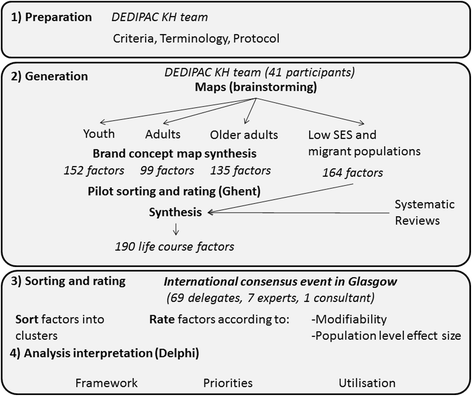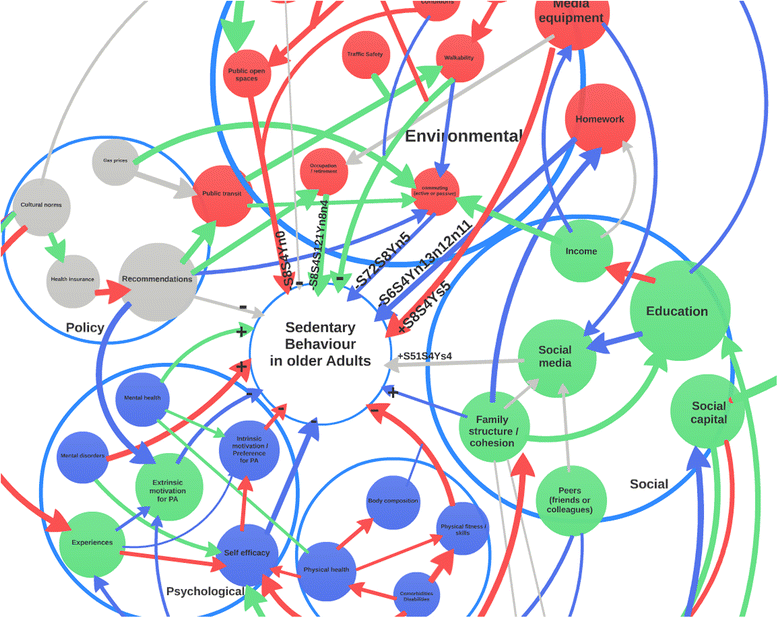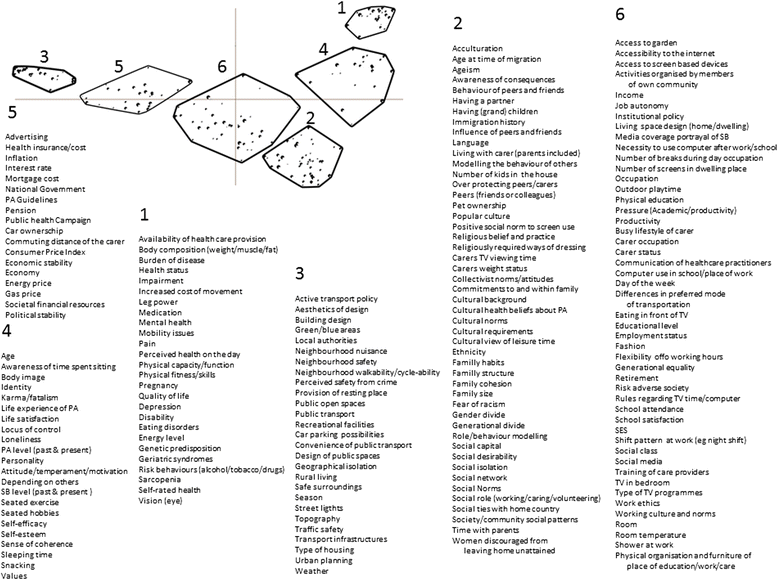The SOS-framework (Systems of Sedentary behaviours): an international transdisciplinary consensus framework for the study of determinants, research priorities and policy on sedentary behaviour across the life course: a DEDIPAC-study
- PMID: 27421750
- PMCID: PMC4947275
- DOI: 10.1186/s12966-016-0409-3
The SOS-framework (Systems of Sedentary behaviours): an international transdisciplinary consensus framework for the study of determinants, research priorities and policy on sedentary behaviour across the life course: a DEDIPAC-study
Abstract
Background: Ecological models are currently the most used approaches to classify and conceptualise determinants of sedentary behaviour, but these approaches are limited in their ability to capture the complexity of and interplay between determinants. The aim of the project described here was to develop a transdisciplinary dynamic framework, grounded in a system-based approach, for research on determinants of sedentary behaviour across the life span and intervention and policy planning and evaluation.
Methods: A comprehensive concept mapping approach was used to develop the Systems Of Sedentary behaviours (SOS) framework, involving four main phases: (1) preparation, (2) generation of statements, (3) structuring (sorting and ranking), and (4) analysis and interpretation. The first two phases were undertaken between December 2013 and February 2015 by the DEDIPAC KH team (DEterminants of DIet and Physical Activity Knowledge Hub). The last two phases were completed during a two-day consensus meeting in June 2015.
Results: During the first phase, 550 factors regarding sedentary behaviour were listed across three age groups (i.e., youths, adults and older adults), which were reduced to a final list of 190 life course factors in phase 2 used during the consensus meeting. In total, 69 international delegates, seven invited experts and one concept mapping consultant attended the consensus meeting. The final framework obtained during that meeting consisted of six clusters of determinants: Physical Health and Wellbeing (71% consensus), Social and Cultural Context (59% consensus), Built and Natural Environment (65% consensus), Psychology and Behaviour (80% consensus), Politics and Economics (78% consensus), and Institutional and Home Settings (78% consensus). Conducting studies on Institutional Settings was ranked as the first research priority. The view that this framework captures a system-based map of determinants of sedentary behaviour was expressed by 89% of the participants.
Conclusion: Through an international transdisciplinary consensus process, the SOS framework was developed for the determinants of sedentary behaviour through the life course. Investigating the influence of Institutional and Home Settings was deemed to be the most important area of research to focus on at present and potentially the most modifiable. The SOS framework can be used as an important tool to prioritise future research and to develop policies to reduce sedentary time.
Keywords: Adults; Ageing; Concept mapping; Determinants; Environment; Europe; Life-course; Older adults; Policy; Public health; Sedentary behaviour; Sitting; System-based approach; Youth.
Figures
References
-
- Wilmot EG, Edwardson CL, Achana FA, Davies MJ, Gorely T, Gray LJ, Khunti K, Yates T, Biddle SJH. Sedentary time in adults and the association with diabetes, cardiovascular disease and death: systematic review and meta-analysis. Diabetologia. 2012;55:2895–2905. doi: 10.1007/s00125-012-2677-z. - DOI - PubMed
Publication types
MeSH terms
LinkOut - more resources
Full Text Sources
Other Literature Sources
Medical





